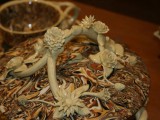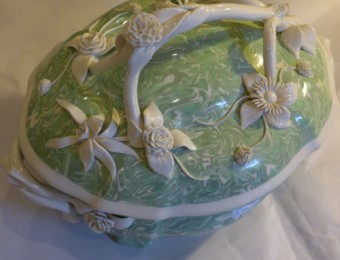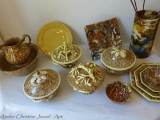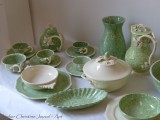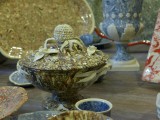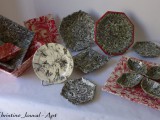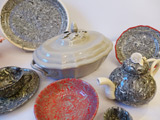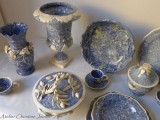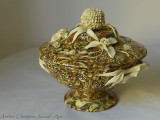History of Mixed Clays
You have to go back to ancient China to find the first mixed and marbled clays, in the Tang dynasty. Several centuries later, Mixed Clays reappeared in England with Josiah Wedgwood 1730/1795), and it seems likely that is reappeared several years later in Apt as well as other French and European centres, but often abandoned due to the long and tedious preparatory work needed.
Over time, the technique of Mixed clays formed the identity of the faience in Apt, a region of precious local clays with differing contrasting colours. The faience-makers brought together multi-coloured clays, natural or dyed with pigments contained in the ochre of the region. This famous mixture, very finely mixed and kneaded, makes up a design throughout the thickness of the product, thus giving the veins of the marble their mineral aspect.
In the 18th century, les Moulins were the precursors of the fine faience of the Apt and Le Castelet area. Alliances with other famous names in the region, such as the Fouques, a family of faience-makers from Moustiers took them with the Arnoux to Valentine, then to England.
For nearly 3 centuries several generations of talented faience makers succeeded one another at Apt, giving rise to original, refined faience, their creations renewing this traditional skill.
